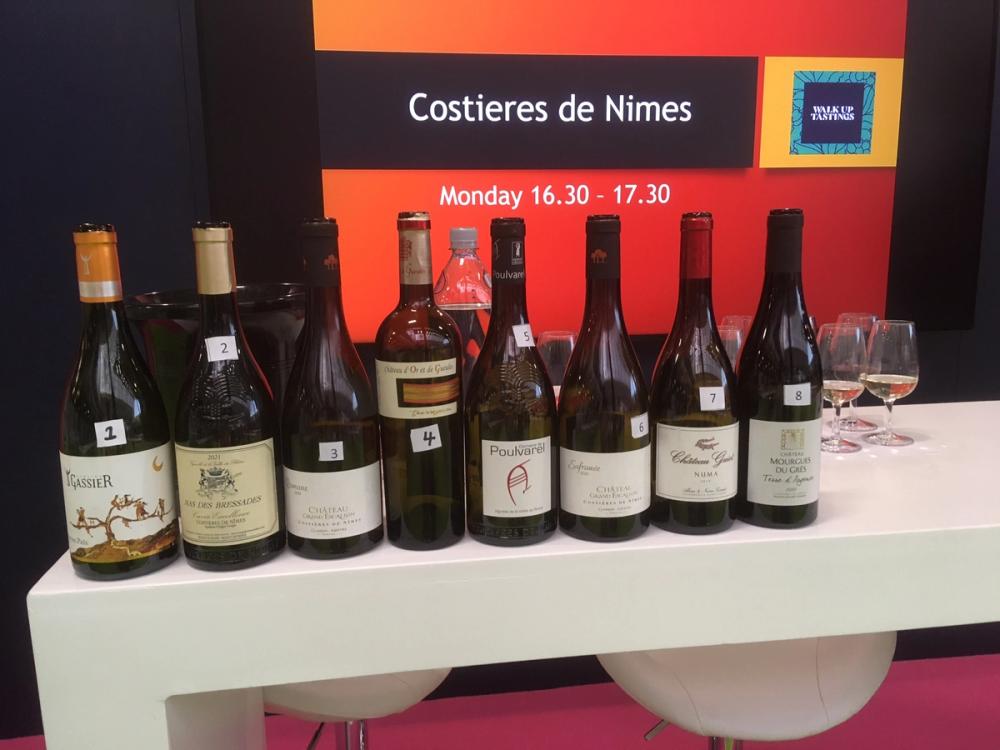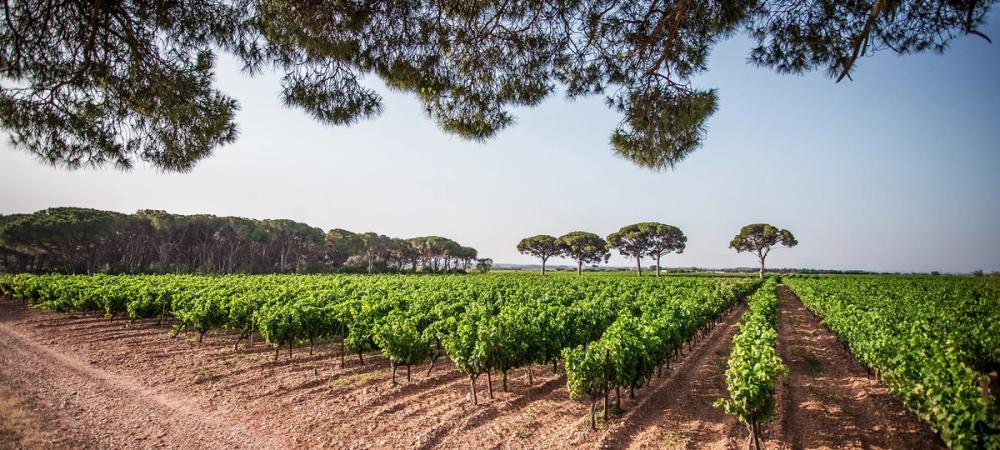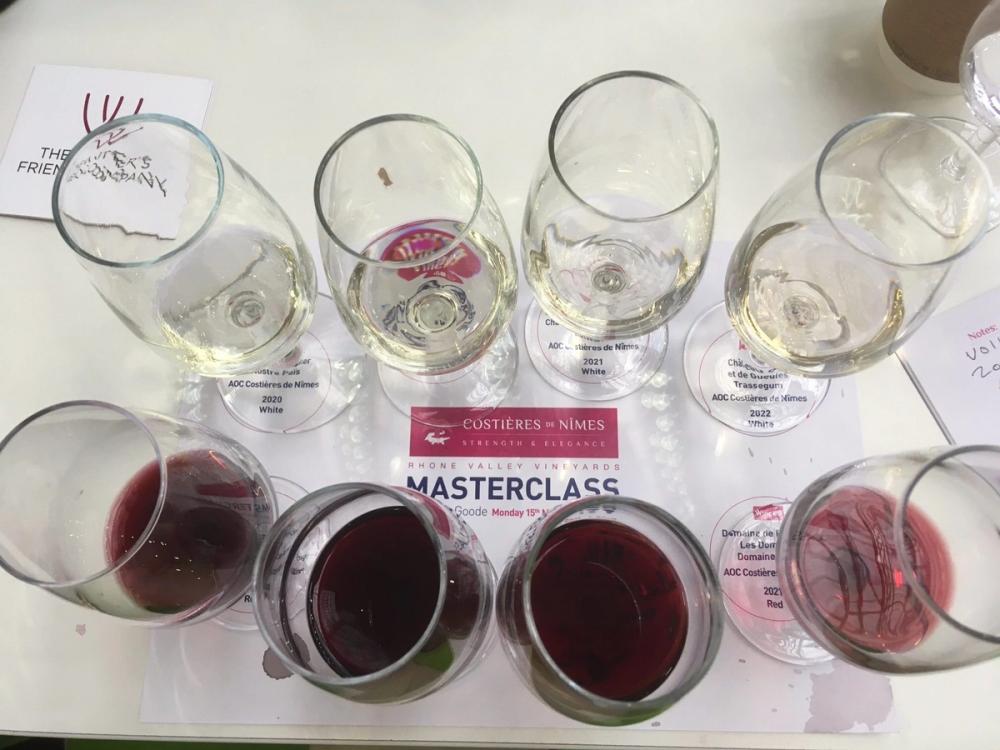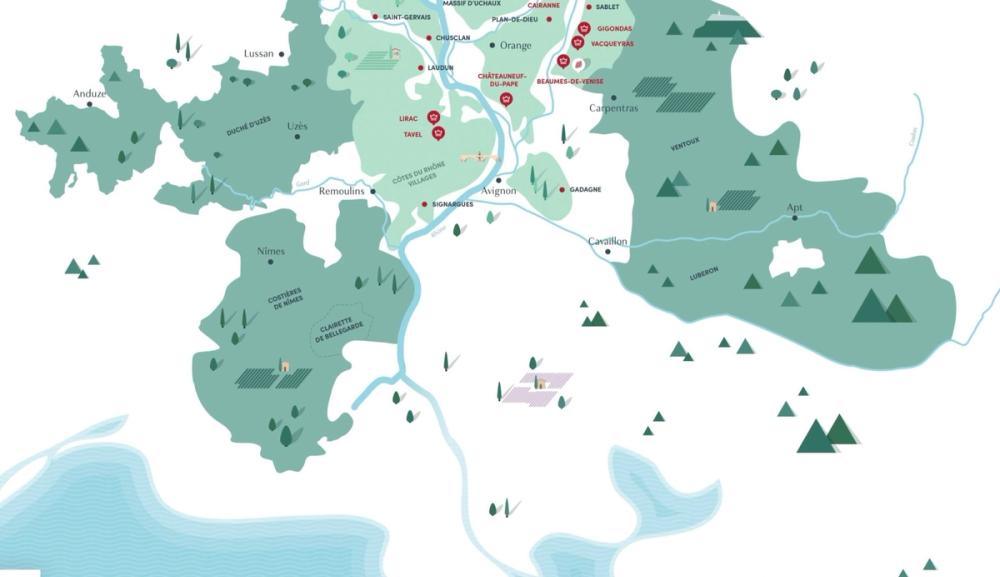“Perhaps most important of all though, is that these are wines that do truly reflect their Mediterranean terroir, as well as that of the marshy, mysterious Camargue,” writes Keay about Costières de Nîmes wines.

The eight wines chosen by Jamie Goode at his London Wine Fair masterclass to better understand the wines of Costières de Nîmes
When you look at the map, perhaps the first thing that strikes you about Costières de Nîmes – the Rhône Valley’s most south-western AOC – is that it doesn’t really seem to form part of the Rhône at all. And indeed until 2004 it didn’t, instead it was Languedoc-Rousillon’s easternmost region, looking across to the Rhône Delta region but legally not part of it. Producers and agronomists argued that its soils, grape varieties and terroir meant it had more in common with the southern Rhône, so it formally switched across, and is now administered by the Avignon-based Rhône Wine committee.
Located to the south of Nîmes, home to the Pont du Gard, the Roman-built aquaduct and close to the marshy Camargue with its famed white wild horses, Costières de Nîmes is one of the oldest wine producing regions in France. Producers say winemaking here dates back to Roman times enabled by proximity to the sea – which cools the vines – long hours of sunshine (typically 2700 hours a year with a high average temperature of 14.5 °C) and limestone and clay soils, with alluvial stones and small pebbles (called galets) facilitating drainage and enabling the vines to readily receive moisture.

Costières de Nîmes describes itself as the Rhône’s only maritime influenced appellation
For many wine drinkers, Costières de Nîmes is one of those French ‘background’ regions – familiar to some perhaps, but not really known or fully understood, – which explains why the AOC opted to include it in a series of masterclasses aimed at broadening knowledge of the Rhône region’s lesser-known AOCs. The other three masterclasses (which you can read about here) focussed on Côtes du Rhône, Lirac/Rasteau and Saint Joseph.
So what’s to know? The AOC dubs itself “the only maritime-influenced appellation from the Rhône Valley” and this influence very much makes itself felt in the wines, which are fresh but distinctive and forceful. This style is reflected in the AOC’s other tagline, “Strength and Excellence,” above which can be found a logo showing a crocodile chained to a palm tree – the symbol of the Roman settlement at Nîmes, following the Roman Army’s Egyptian campaign with Julius Caesar.
This is very much red wine country – 93% of the harvest is from red varieties (with 50% going to red wine, 43% rose) with just 7% white, although as elsewhere in France, production of white wine is rising to reflect changing tastes. As in much of the rest of the Rhône, wines are blended with Grenache, Syrah and Mourvèdre forming the backbone of red and pink wines, whilst whites comprise Roussanne, Marsanne and Grenache Blanc with other varieties including Viognier, Rolle and Clairette Blanc also allowed in smaller ratios.
Four whites from Costières de Nîmes

Given this red/white ratio, and the importance of pink wine to the region, it was unusual that as well as four reds, Jamie Goode selected four whites for his Masterclass, held in the bustling surroundings of the London Wine Fair in Olympia, rather than any rosé. The chosen wines were, however, an interesting selection, led by Domaine Gassier’s Nostre Pais 2020, a blend of 65% Grenache Blanc , 20% Clairette, and 7.5% each of Viognier and Roussanne, made by a man Goode describes as a “pioneer of regenerative agriculture”; this organic wine was very textural, showing peach and lychee on the palate, with a long savoury finish.
Next up, another organic wine Mas des Bressades Cuvee Excellence 2020, from the northern part of the AOC, with the Costières de Nîmes symbol proudly embossed on the bottle, made from Viognier and Roussane. More restrained, with suggestions of pear and grapefruit on the palate, this is also quite rounded with a good capacity to evolve. It was followed by Château Grand Escalion’s Romane 2021 (made by Gabriel Meffre, a large producer) – a rounded, also quite textural blend of 40% each of Grenache Blanc and Roussanne and 20% Rolle (aka Vermentino). Produced for freshness from grapes picked early in the harvest, this full-bodied white wine spent four months in oak before bottling and has great ageing capability.
The last white, Château d’Or et de Gueules Trassegum 2022 – made from 80% Roussanne and 10% each Grenache Blanc and Rolle – is biodynamic and again quite fruit-forward, with suggestions of white pepper, apricot and peach. Rounded and textural.
“I think whites in the region have huge potential, particularly if made from grapes picked early to show flavour and personality. Really though, it is the skill of the blending which determines the quality of these wines,” says Goode.
Four reds from Costières de Nîmes
Something which could also be said of the four reds chosen to end the tasting. The first, Domaine de Poulvarel’s Les Domaines 2021, an equal Syrah/Grenache blend, from vineyards near the Pont du Gard, with river pebble and sandy clay soils, is a warm, rounded wine with suggestions of black cherries and sandalwood spice. Moreish and quaffable.
Next up, from just south of Nîmes, the red counterpart to the third white, Château Grand Escallion Safranee 2020, 80/20 Syrah/Grenache, with complexity supported by 70% of the wine seeing fermentation in concrete and 30% in French oak. Bright and fresh, with suggestions of red cherry and pomegranate, but hefty too, with 15% alcohol.
The last two wines were different again from the wines above and each other.
Château Guiot Nima 2019 benefits from some bottle age and from the grapes spending one year in large oak barrels having previously been hand-harvested in the morning, to help preserve freshness and approachability. This 80/20 Syrah/Mourvèdre blend seems typically Rhône with good complexity and character. Last, but by no means least, Château Mourgues du Gres Terre d’Argence Rouge 2019 (80/20 Syrah/Grenache Noir) produced in an historic region between the Rhône and the Camargue by Francois and Anne Collard, was very moreish, meaty and textured with dark berry fruit predominant, and a long finish.
So in conclusion…
So what to conclude from my brief dip into this not-so-well-known region?
Costières de Nîmes may not have much instant name recognition here but the UK is the leading market for the region, taking almost one quarter of exports (some 41% of production goes to export). The appeal, on trying these wines, seems pretty apparent.
Clearly value for money is a big factor for the cost-conscious Brits; a very high proportion of Costières de Nîmes wines retail at below £15 a bottle, with good value to be found below £10 – a prime example is J.Boulard’s Espirit des Trois Pierres 2021 currently being sold by Waitrose for £6.74. Medium bodied, fruity and accessible and sealed with screwcap, this very modern GSM wine reflects the market Costières de Nîmes is currently targeting.
But there is more. Some 66% of producers here (of whom 70 are independent, 20 negociants and 12 cooperatives) now claim to follow sustainable winemaking practices, whilst there is also a discernible shift towards organic winemaking, with some 25% of vines now grown organically, a ratio that will continue rising, whilst almost 30% of producers are either completely organic or in conversion. Biodynamic winemaking is also rising though from a much lower level.

Perhaps most important of all though, is that these are wines that do truly reflect their Mediterranean terroir, as well as that of the marshy, mysterious Camargue.
Costières de Nîmes describes itself as the Rhône’s only maritime influenced appellation and the typical freshness of these wines is a reflection not just of the sea and the region’s many rivers, but also of the cooling effect of the Mistral which blows across the vines several times a year.
With consumers generally turning away from heavy, often oaked wines with high alcohol levels, the fresher style of much of what comes from the Costières de Nîmes region is clearly finding a strong welcome in today’s market, although those who prefer more classic, traditional styles – as well as moreish, fruit-driven, fresh rosés – will also not be disappointed.
































